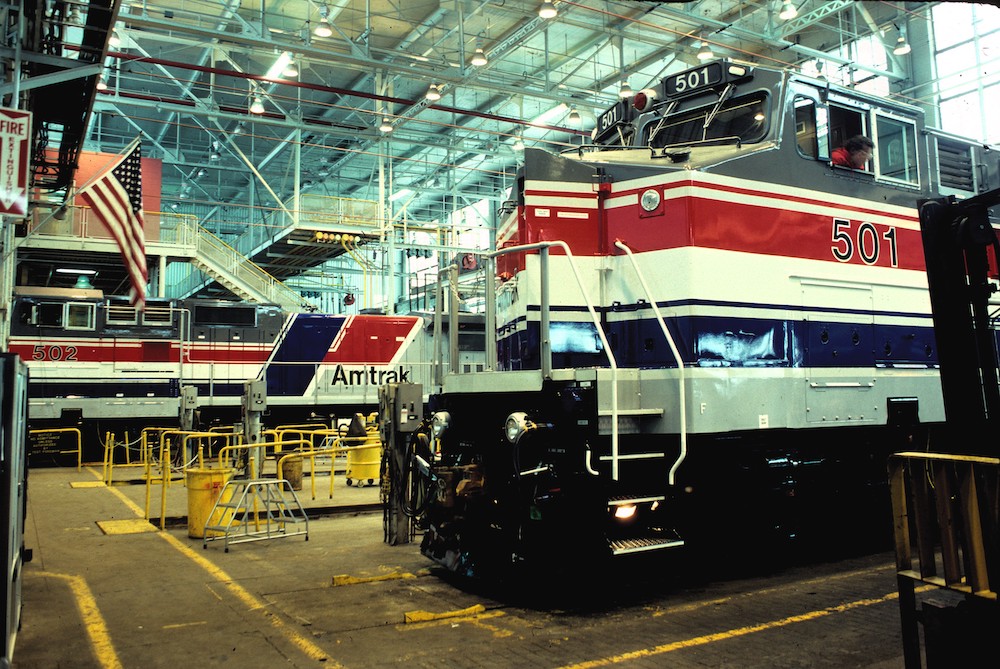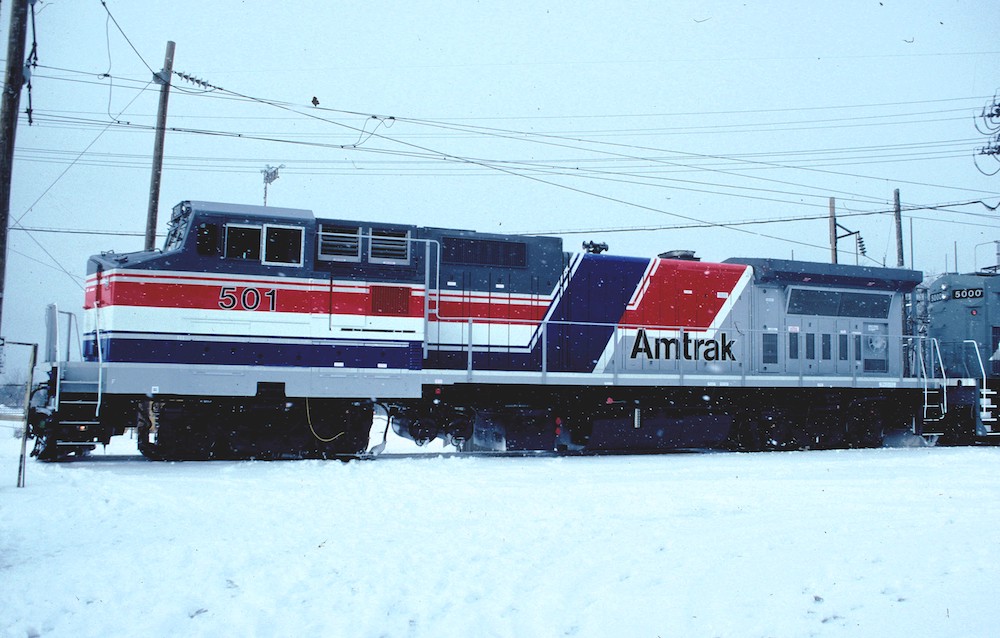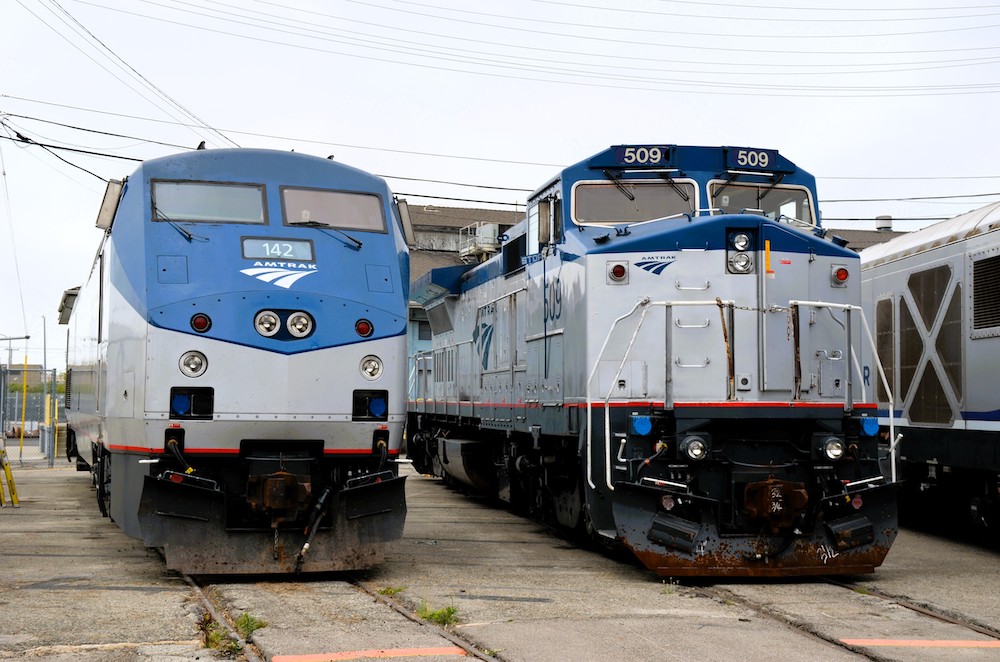
In the early 1990s, as the bulk of Amtrak’s EMD F40PH diesel fleet began nearing potential retirement age, the passenger carrier quietly began nosing around for potential replacements. After testing Electro Motive’s F69 AC traction prototypes, the company opted to explore a less-expensive option.
To save money, Amtrak sought to modify an existing freight locomotive model to passenger service. Amtrak’s Dash 8-32BWH was born. They were delivered in a unique red, white, and blue paint scheme that reminded fans and workers of a can of Pepsi-Cola. Thus, the nickname ‘Pepsi Cans’ quickly sprung up. Today they wear a more standard paint job.

In English that means one of General Electric’s Dash 8 model road switchers designated P for passenger, rated at 3,200 hp, riding on two-axle or B trucks, with a wide cab and equipped with Head end power for the passenger cars it is pulling. Twenty units were built and numbered 500-519. Two, originally funded by the California Department of Transportation. With a 74:29 gear ratio, the units top out at 103 mph.
Initially, Amtrak’s Dash 8-32BWH locomotives could be found mixed in with other units almost anywhere on the passenger carrier’s route map. Today, they usually are relegated to yard and switching service at major Amtrak hubs in Los Angeles, Oakland, Chicago, and Miami. But don’t let that fool you. Let an assigned unit break down and more often than not a Pepsi Can will replace it for the day.
The vast majority, 16, are still on the active roster today. A couple have been scrapped and a few are laid up for major repairs.
If the design interests you, don’t tarry about getting out and photographing them, however. While there is no crystal ball on how long they will last, they are currently more than 30 years old. Amtrak will keep them running and on the active roster because they are reliable and relatively easy to maintain, but nothing lasts forever.















Here in Orlando , I walk out to a spot called the Dinky Trail on Lake Highland Drive where I watch and photograph both Sunrail and Amtrak trains passing through. This is the Both the Silver Meteor and Silver Starvand on several occasions I have seen these units operating on these trains but they are painted in the Amtrak colors of silver and blue Usually both southbound trains come along with one of these units and then the next day the same train consist and units are on the northbound counterparts where the locos will be swapped at Washington DC for electric power for the remainder of the run to NYC. When you see them operating with a Genesis unit these units regardless of their status and role of pulling passenger trains. They defintely have the look and feel of a freight unit. Someday when these locomotives get replaced or retired by Amtrak some of these might wind up in freight service on some short line. Imcidemtly some F40 units that Amtrak replaced actually made it into freight service pulling freight trains. I don’t remember the railroad that got them or if they are still in service but someone might know or have that info Joseph C Markfelder